The Power of Classroom Relay: Fostering Collaboration and Engagement
Classroom relay is a dynamic teaching strategy that transforms traditional learning environments into lively, interactive spaces. It involves organizing students into teams and engaging them in various activities aimed at reinforcing academic concepts, fostering teamwork, and promoting active participation. In this article, we explore the concept of classroom relay, its benefits, how to organize it effectively, examples of activities, and tips for success.
1. Introduction to Classroom Relay
Classroom relay is a teaching technique where students work collaboratively in teams to complete tasks or activities within a set timeframe. It encourages active participation, critical thinking, and effective communication among students. By incorporating elements of competition and cooperation, classroom relay adds an element of fun and excitement to the learning process.
2. Benefits of Classroom Relay
Enhances Teamwork
One of the primary benefits of classroom relay is its ability to foster teamwork among students. By working together towards a common goal, students learn the importance of collaboration, communication, and mutual support. Team-based activities promote a sense of camaraderie and belonging, which can have a positive impact on classroom dynamics.
Encourages Active Learning
Classroom relay activities are designed to be interactive and engaging, encouraging students to actively participate in the learning process. Unlike passive learning methods where students simply absorb information, relay activities require students to apply their knowledge, solve problems, and think critically. This hands-on approach helps reinforce key concepts and improves retention.
Promotes Problem-Solving Skills
Through classroom relay, students are presented with challenges that require them to think creatively and strategically. Whether it's solving a math problem, completing a puzzle, or brainstorming ideas, relay activities provide opportunities for students to develop their problem-solving skills in a collaborative setting. By working together to overcome obstacles, students learn to think critically and adapt to different situations.
3. How to Organize a Classroom Relay
Organizing a successful classroom relay requires careful planning and preparation. Here are some steps to follow:
Choose Suitable Activities
Select activities that are age-appropriate, curriculum-aligned, and conducive to teamwork. Consider incorporating a mix of academic, physical, and creative challenges to cater to different learning styles and interests.
Divide Students into Teams
Divide the class into teams of equal size, making sure to mix students of varying abilities and personalities. Assign each team a unique name or color to foster a sense of identity and camaraderie.
Set Clear Rules and Goals
Establish clear rules and guidelines for the relay, including how points will be awarded, what constitutes fair play, and any safety precautions that need to be observed. Clearly communicate the objectives of the relay and the criteria for success to ensure that all students understand what is expected of them.
4. Examples of Classroom Relay Activities
Classroom relay activities can be tailored to suit various subjects, grade levels, and learning objectives. Here are some examples:
Academic Review Games
- Quiz bowl: Teams answer questions on academic subjects such as math, science, history, and literature.
- Flashcard relay: Students race to match vocabulary words with their definitions or mathematical equations with their solutions.
Physical Challenges
- Fitness relay: Teams compete in a series of physical challenges such as jumping jacks, push-ups, or running laps.
- Obstacle course: Students navigate through a series of obstacles while carrying objects or completing tasks.
Creative Tasks
- Art relay: Teams collaborate to create a piece of artwork using different materials or techniques.
- Storytelling relay: Each team adds a sentence or paragraph to a story, building on the contributions of their teammates.
5. Tips for a Successful Classroom Relay
Ensure Fairness
Maintain fairness and impartiality throughout the relay by enforcing rules consistently and providing equal opportunities for all teams to succeed.
Provide Rewards and Recognition
Recognize and reward students for their participation, effort, and achievements during the relay. This could include certificates, stickers, or small prizes to incentivize participation and motivate students to do their best.
Encourage Sportsmanship
Emphasize the importance of good sportsmanship and respectful behavior during the relay. Encourage students to congratulate their opponents, support their teammates, and demonstrate integrity and honesty at all times.
6. Conclusion
Classroom relay is a powerful teaching tool that promotes collaboration, engagement, and active learning among students. By incorporating elements of competition and cooperation, relay activities create an interactive and dynamic learning environment where students can develop essential skills and knowledge while having fun. By following the guidelines outlined in this article, educators can harness the power of classroom relay to enhance student learning and foster a positive classroom culture.
FAQs
-
Can classroom relay be adapted for virtual learning environments?
- Yes, classroom relay activities can be modified for online platforms using video conferencing tools, interactive quizzes, and collaborative digital platforms.
-
How can teachers assess student performance during a classroom relay?
- Teachers can assess student performance through observation, participation, and completion of tasks. Rubrics and scoring criteria can also be used to evaluate teamwork, problem-solving skills, and content knowledge.
-
Are there any safety considerations to keep in mind when organizing a classroom relay?
- It's important to ensure that relay activities are safe and age-appropriate. Teachers should conduct risk assessments, provide appropriate supervision, and communicate any safety guidelines to students.
-
What age groups are suitable for classroom relay activities?
- Classroom relay activities can be adapted for students of all ages, from kindergarten to high school. The complexity and difficulty of the activities can be adjusted based on the age and abilities of the students.
-
How can classroom relay activities support social-emotional learning (SEL) objectives?
- Classroom relay promotes teamwork, communication, and problem-solving skills, which are essential components of social-emotional learning. By working together towards a common goal, students learn to manage their emotions, build relationships, and develop empathy and resilience.
Multiplication Games | Addition Games| Subtraction Games | Telling Time Games | Fraction Games |
Kindergarten Math Games
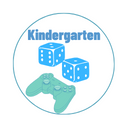
Play free preschool and kindergarten math games for kids. Fun math activities for kindergarten
Go to page1st Grade Math Games
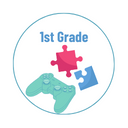
Math games for 1st grade students to play games and practice different math topics. Maths games for class 1
Go to page2nd Grade Math Games
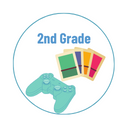
2nd grade math games for kids to play and practice math problems. Maths games for 2nd class
Go to page3rd Grade Math Games
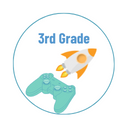
3rd grade math games for kids to play and practice math problems. Maths games for class 3
Go to page4th Grade Math Games

4th grade math games for kids to play and practice math problems. Fun math activities for 4th graders
Go to page5th Grade Math Games

5th grade math games for kids to play and practice math problems. Cool math games for 5th graders
Go to page6th Grade Math Games

6th grade math games for kids to play and practice math problems. Math jeopardy 6th grade.
Go to page7th Grade Math Games
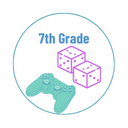
7th grade math games for kids to play and practice math problems. Math games for grade 7
Go to page










